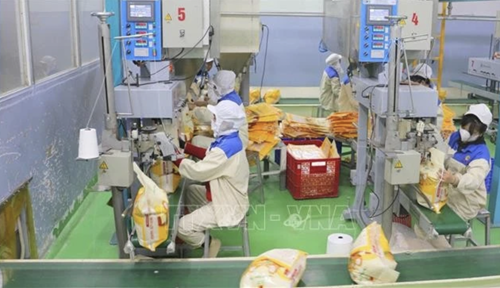The research, conducted by scientists from the German University of Göttingen and the Scottish University of Edinburgh, used data from the U.N. Food and Agriculture Organization (FAO) to assess the self-sufficiency of 186 countries and territories across seven major food categories: cereals, vegetables, fruit, starchy staples, dairy products, meat, and fish.
    |
 |
|
Workers package rice for export at the Thao Son food factory, a subsidiary of Loc Troi Group JSC. |
According to the findings, Guyana, with a population of around 800,000, is the only one able to fully meet domestic demand for all food groups without relying on imports. China and Vietnam followed closely, each achieving self-sufficiency in six categories.
Vietnam’s strong performance is attributed to its robust agricultural sector, which maintains consistently high yields in key areas such as rice, fruit and vegetables, fishery products, meat, and starchy foodstuffs. While many nations remain heavily reliant on food imports, the Southeast Asian nation’s sustained domestic production capacity provides it with a vital advantage in safeguarding national food security during periods of global uncertainty.
The study also highlighted a stark contrast in global food resilience. Out of the 186 analyzed, 154 were found to be self-sufficient in only two to five food groups. Alarmingly, several nations were unable to domestically meet the demand for any of the categories. These included Afghanistan, the United Arab Emirates, Iraq, Macau (China), Qatar, and Yemen – countries where over 50% of food supplies depend on imports.
Vietnam is currently one of the world’s leading food exporters, yet continues to preserve a diverse and sustainable agricultural system to meet domestic demand. This dual capacity is seen as a key strength, positioning the country to better navigate potential shocks in global food trade in the years ahead.
Source: VNA